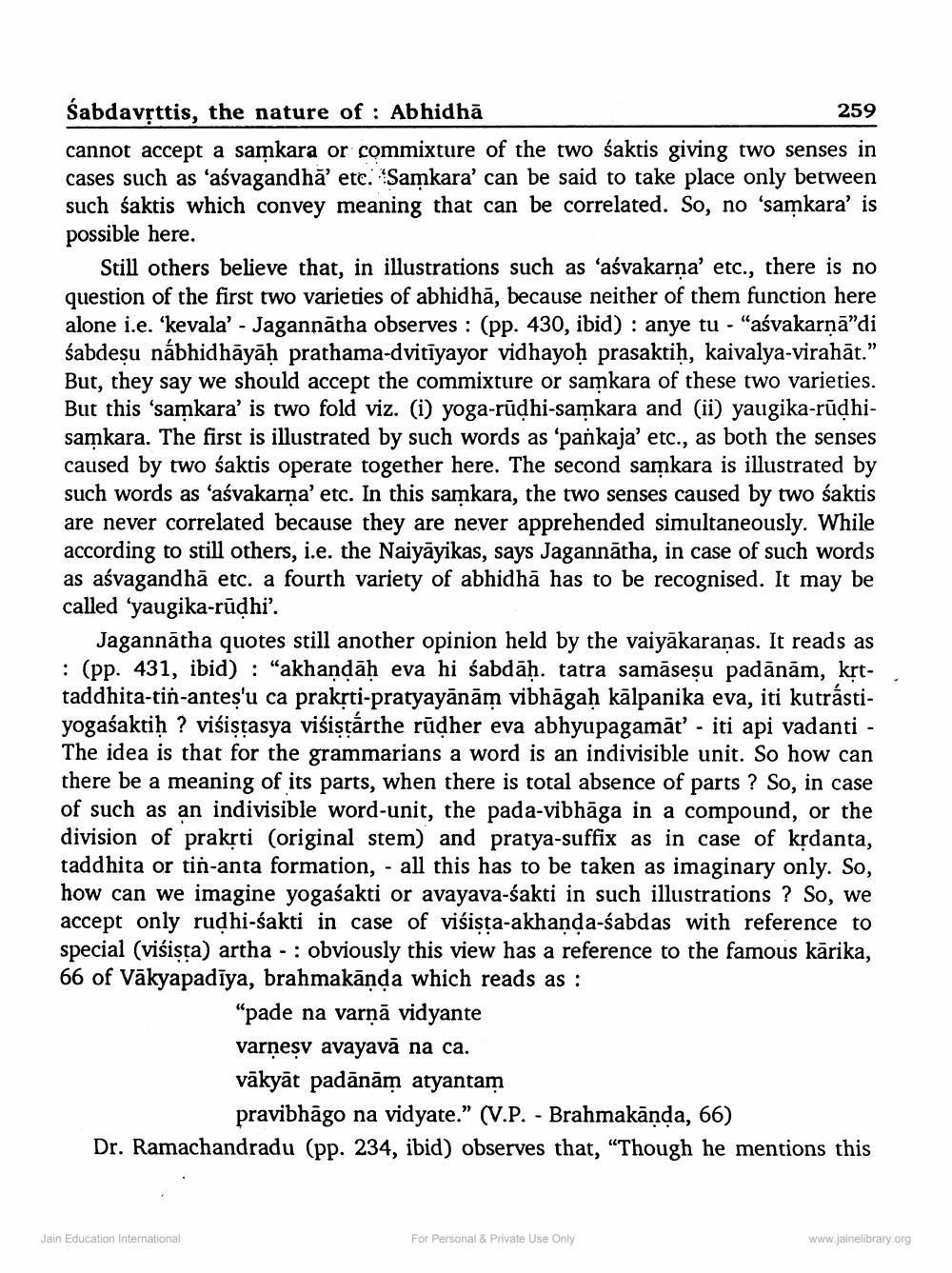________________
Sabdavrttis, the nature of : Abhidhā
259 cannot accept a samkara or commixture of the two śaktis giving two senses in cases such as 'ašvagandha' etc. Samkara' can be said to take place only between such śaktis which convey meaning that can be correlated. So, no 'samkara' is possible here.
Still others believe that, in illustrations such as 'aśvakarna' etc., there is no question of the first two varieties of abhidhā, because neither of them function here alone i.e. 'kevala' - Jagannātha observes : (pp. 430, ibid) : anye tu - "aśvakarnā”di śabdesu nábhidhāyāh prathama-dvitiyayor vidhayoh prasaktih, kaivalya-virahāt.” But, they say we should accept the commixture or samkara of these two varieties. But this 'samkara' is two fold viz. (i) yoga-rūdhi-samkara and (ii) yaugika-rūdhisamkara. The first is illustrated by such words as 'pankaja' etc., as both the senses caused by two Śaktis operate together here. The second samkara is illustrated by such words as 'aśvakarna' etc. In this samkara, the two senses caused by two śaktis are never correlated because they are never apprehended simultaneously. While according to still others, i.e. the Naiyāyikas, says Jagannātha, in case of such words as aśvagandhā etc. a fourth variety of abhidhā has to be recognised. It may be called 'yaugika-rūdhi'.
Jagannātha quotes still another opinion held by the vaiyākaranas. It reads as : (pp. 431, ibid) : “akhandah eva hi sabdẫh. tatra samāsesu padānăm, kếttaddhita-tin-antes'u ca prakrti-pratyayānām vibhāgah kālpanika eva, iti kutrástiyogaśaktiḥ ? viśistasya viśistárthe rūdher eva abhyupagamāt' - iti api vadanti - The idea is that for the grammarians a word is an indivisible unit. So how can there be a meaning of its parts, when there is total absence of parts ? So, in case of such as an indivisible word-unit, the pada-vibhāga in a compound, or the division of praksti (original stem) and pratya-suffix as in case of krdanta, taddhita or tin-anta formation, - all this has to be taken as imaginary only. So, how can we imagine yogaśakti or avayava-sakti in such illustrations ? So, we accept only rudhi-sakti in case of viśista-akhanda-śabdas with reference to special (visista) artha - : obviously this view has a reference to the famous kārika, 66 of Vākyapadiya, brahmakānda which reads as :
“pade na varņā vidyante varņeșy avayavā na ca. vākyāt padānām atyantam
pravibhāgo na vidyate." (V.P. - Brahmakānda, 66) Dr. Ramachandradu (pp. 234, ibid) observes that, “Though he mentions this
Jain Education International
For Personal & Private Use Only
www.jainelibrary.org




